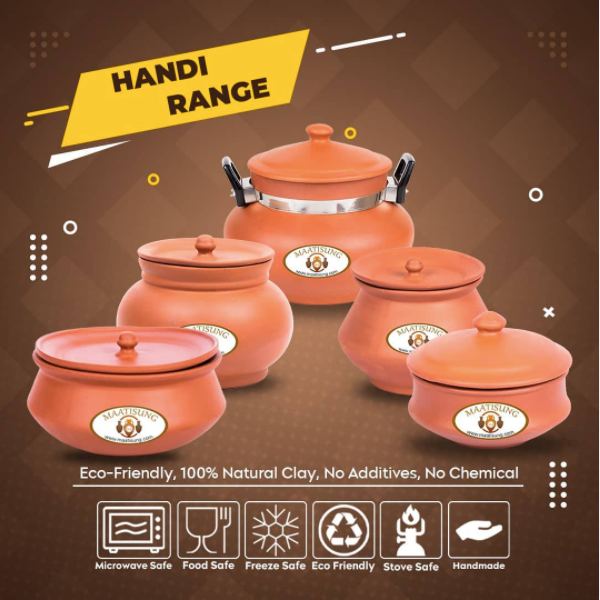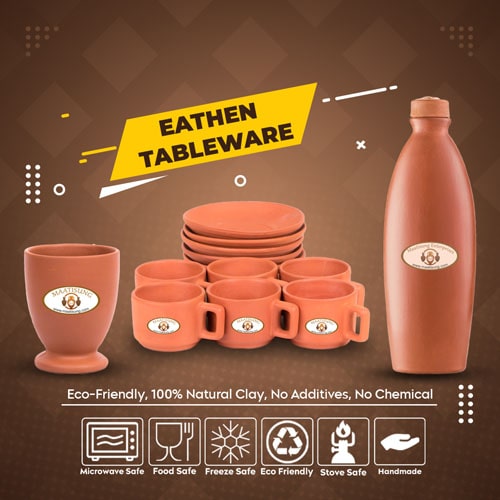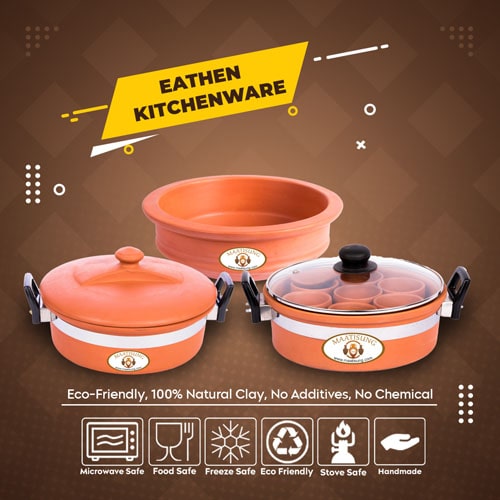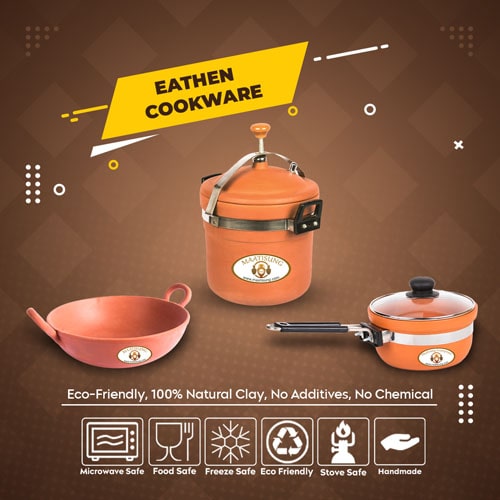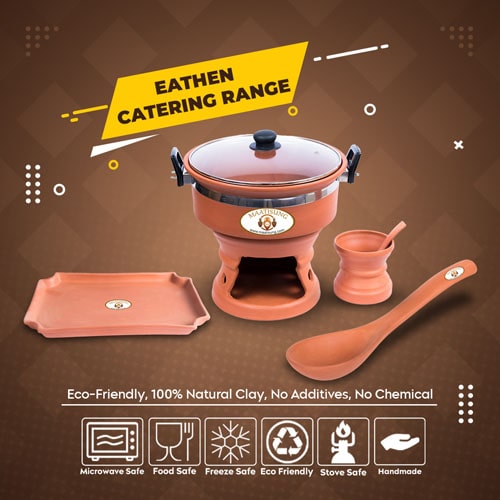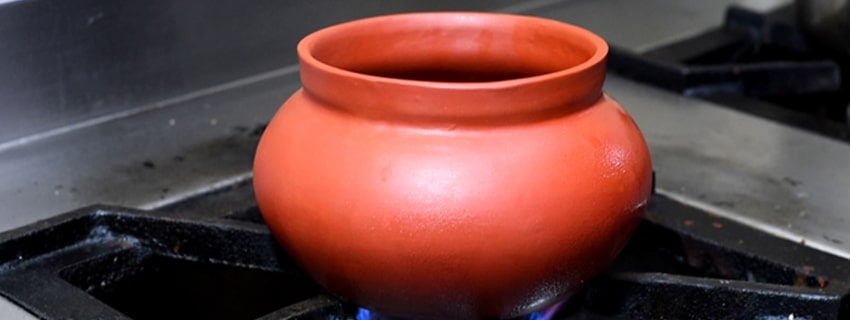Should You Cook in Earthen Pots? Get Back to the Basics!
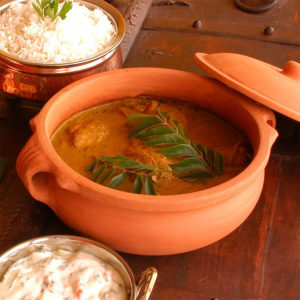 Have you ever tried handi chicken? If you have, you would know the difference of the taste of the chicken as compared to what is cooked in normal utensils. In the olden times, people in rural India along with storing water in earthen pots or surahi, also used to cook in clay pots or handi, which was healthy and flavoursome. Earthenware had always been an intrinsic part of Indian households, however, now with different types of utensils available, earthen pots are barely used. You will see many urban households have earthen cum terracotta cutlery as showpieces, but not many like cooking in them as the food cooks slower than usual. However, it is also difficult to get pure clay pots as they are glazed and may be hazardous with constant use. Let us look at some benefits of using clay pots.
Have you ever tried handi chicken? If you have, you would know the difference of the taste of the chicken as compared to what is cooked in normal utensils. In the olden times, people in rural India along with storing water in earthen pots or surahi, also used to cook in clay pots or handi, which was healthy and flavoursome. Earthenware had always been an intrinsic part of Indian households, however, now with different types of utensils available, earthen pots are barely used. You will see many urban households have earthen cum terracotta cutlery as showpieces, but not many like cooking in them as the food cooks slower than usual. However, it is also difficult to get pure clay pots as they are glazed and may be hazardous with constant use. Let us look at some benefits of using clay pots.
Benefits of Using Clay Pots in Cooking
According to Ayurveda Specialist at Dr. Vaidya’s, Dr. Surya Bhagwati, “cooking in a clay pot not only has a variety of health benefits but also makes for an easier cooking process and in the end, a more flavorful and nutritious dish. Due to its numerous health benefits, Ayurveda suggests cooking in a clay pot. Cooking in a clay pot is much better than cooking in a normal utensil, not just for its various health benefits, but also makes it much simpler to cook and improves the quality of the food at the end. The porosity and natural insulation properties of clay causes heat and moisture to circulate throughout clay pots. This makes cooking in a clay pot a much slower process but has added benefit of preventing amateur cooks from burning their dishes. More importantly, this causes the moisture and nutrient loss while cooking in clay pots to be much lower compared to cooking in metal or enamel lined utensils.”
Porous in Nature
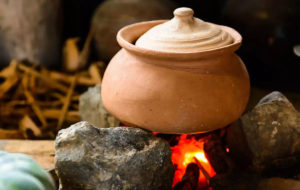 Clay pot’s porous nature allows both moisture and heat to circulate through the food, which results in slow yet aromatic food. It also retains the nutrition of the food, which is generally lost in other types of utensils. The thermal inertia in clay pots helps meats stay tender and soft as the muscle proteins denature and collagen breaks down complety
Clay pot’s porous nature allows both moisture and heat to circulate through the food, which results in slow yet aromatic food. It also retains the nutrition of the food, which is generally lost in other types of utensils. The thermal inertia in clay pots helps meats stay tender and soft as the muscle proteins denature and collagen breaks down complety
Alkaline Nature
Clay is alkaline in nature and it interacts with the acidity in the food, thereby neutralising the pH balance and eventually making food healthier and a lot tastier. It is believed to provide the required minerals including calcium, magnesium, iron, phosphorus and sulphur that benefits our health.
Usage of Oil
Due to its heat resistance and slow cooking, the food retains all its oils and moisture; therefore, you wouldn’t require extra oil and fat for providing moisture to your food.
Ensures Flavourful Food
Due to slow cooking and porous nature of clay pots, the moisture and aroma tends to stay in the pot without losing any nutrient, hence making it flavoursome. It also has an earthy flavour added to it, which we bet you may not get in any other utensil.
and Easily Available
No matter how modern times may be, we are sure there are shops that still sell pure and unglazed clay pots. Clay pots are not very expensive, at least not more than any other types of utensil. You can get them in different shapes and sizes without really making a hole in your pocket.
Benefits of Using a Clay Pot
Dr. Surya says, “The health benefits of cooking in a clay pot are vast. Firstly, clay pots add many important nutrients like calcium, phosphorous, iron, magnesium and sulfur to food, which are extremely beneficial to our body. Clay is also alkaline and thus, acts neutralized the acidity in the food, which makes it easier for us to digest. Importantly, oil is not necessary for cooking in a clay pot and thus, it is observed that food cooked in clay pots are much lower in fat than food prepared in any other method.”
What Kind of Clay Pots to Look Out For
According to the book Diet & Nutrition, A Holistic Approach by Rudolph Ballentine, pottery has been used even longer than iron and grains or beans beaked in an earthenware pot have a remarkable flavour. In India, especially crockery pots are used over the fire. Modern pottery, however, is often glazed with compounds that contain lead. If the glaze is red or yellow and food, especially those which are acidic, are left to stand in contact with glazed surfaces, it may leach out some of the lead or cadmium and contaminate the food.
As per Ayurveda expert Dr. Sandeep Madan from Aastha Ayurvedic Clinic, “In modern times, I wouldn’t suggest anyone to use clay pots majorly because they are glazed with substances that contain lead, mercury and many others that can be hazardous for health. If you manage to get an unglazed and pure earthen pot, you can start cooking in them after soaking them in water for some time.
Get products in their purest form, but it isn’t impossible. If you really want to start cooking in clay pots, make sure you do not buy any glazed or polished one, rather try and find unglazed ones. If you get your hands on them, you wouldn’t want to miss the earthy flavours of food and surely never want to go back to other utensils.

